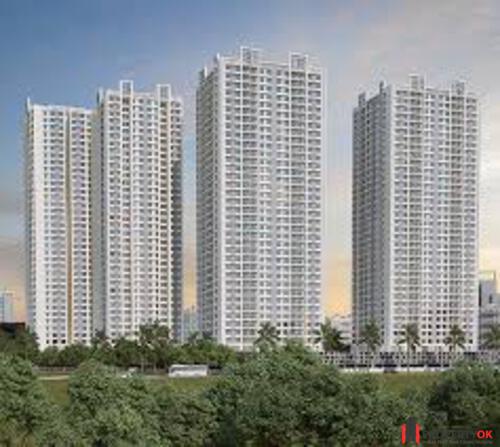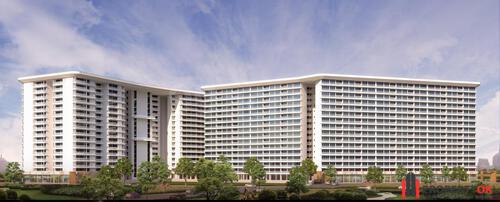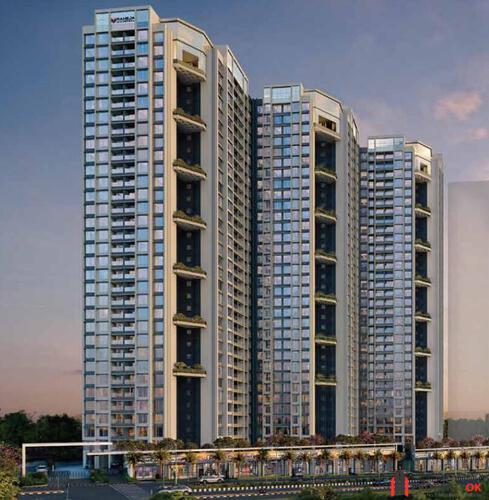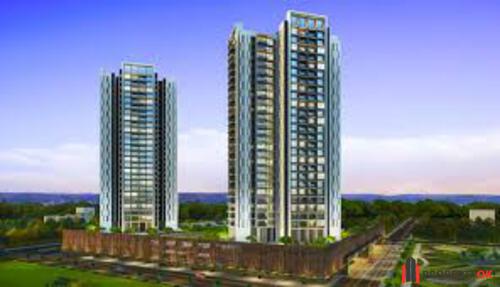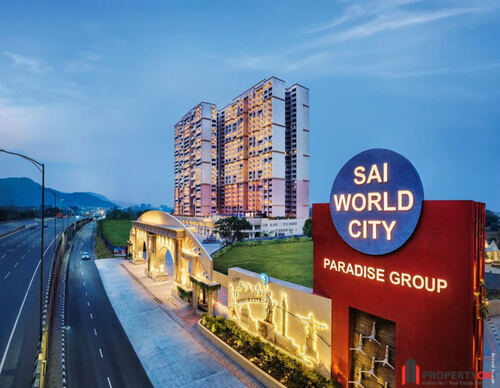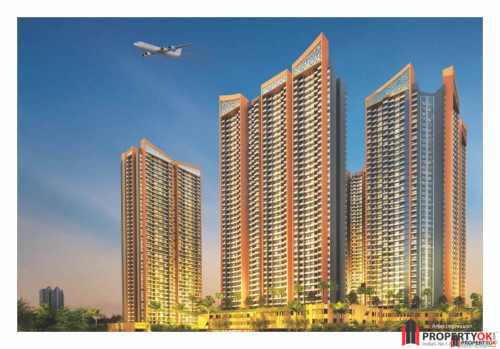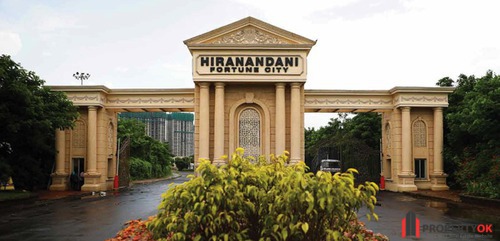When considering premium residential investments in Navi Mumbai, potential buyers often focus on amenities, location advantages, and pricing. However, understanding the underlying legal complexities is equally crucial for making informed decisions. The RAHEJA SOLARIS project, developed by RAHEJA UNIVERSAL PVT LTD, presents several legal intricacies that demand careful examination.

Located in the bustling area of Juinagar, this development sits on a substantial 68.03-acre plot within the Trans Thane Creek Industrial Area. While the project promises modern living spaces and attractive RAHEJA SOLARIS Navi Mumbai floor plan options, the legal documentation reveals multiple layers of complexity that potential investors should thoroughly understand. The project’s RAHEJA SOLARIS RERA number registration provides some transparency, but a deeper investigation reveals concerning legal issues.

The significance of these legal concerns becomes apparent when examining flats in Navi Mumbai market dynamics. Unlike many residential projects with straightforward ownership structures, RAHEJA SOLARIS operates under a complex legal framework that creates unique risks and limitations for potential buyers.
Title History and Ownership Complications
The Leasehold Nature of RAHEJA SOLARIS
The fundamental structure of property ownership for RAHEJA SOLARIS differs significantly from typical freehold properties. The land operates under a leasehold arrangement with the Maharashtra Industrial Development Corporation (MIDC) dating back to 1966. This century-long lease, while renewable, creates specific legal implications for buyers that extend far beyond simple ownership rights.
Read our latest legal blog to uncover the hidden legal dangers lurking behind Bhoomi Simana Parel.
Bhoomi Simana Parel: The Hidden Legal Dangers Lurking Behind Dream Homes
The original lease was granted to Herdillia Chemicals Ltd in 1966, establishing a 100-year renewable lease term. However, the ownership journey becomes considerably more complex from this point forward. Through a series of corporate restructuring events, the rights eventually vested with RAHEJA UNIVERSAL PVT LTD, but not without creating a complicated ownership trail that raises questions about title clarity and future security.
Understanding leasehold properties requires recognising that buyers never truly own the land beneath their homes. Instead, they acquire rights to use the property for the lease duration. This distinction becomes critical when considering long-term investment value, inheritance planning, and resale potential. The leasehold structure also subjects property owners to ground rent obligations and lease renewal uncertainties that freehold properties avoid entirely.
Corporate Restructuring and Assignment Maze
The title investigation reveals a convoluted path of ownership transfers that raises serious questions about the clarity of the title. Initially leased to Herdillia Chemicals Ltd, the property rights were transferred to Shubh Shanti Services Ltd in 2002 through a court-sanctioned Scheme of Arrangement. Subsequently, development rights were assigned to K. Raheja Universal Pvt. Ltd between 2003-2006, before finally vesting in the current entity.

This multiple-transfer scenario, while legally documented, creates potential complications for future buyers. Each transfer point represents a potential area of legal challenge, particularly given the complex nature of corporate restructuring in the real estate sector. The intricate corporate history also complicates due diligence processes, as buyers must verify the legitimacy and completeness of each transfer in the ownership chain.
The Urban Land Ceiling Act exemptions obtained in 1980 and 1993 add another layer of regulatory complexity. While these exemptions were necessary for the project’s development, they also create specific obligations and restrictions that current and future owners must understand and comply with.
Financial Encumbrances and Mortgage Concerns
Heavy Mortgage Burden on RAHEJA SOLARIS Property
One of the most significant legal concerns surrounding RAHEJA SOLARIS involves the extensive mortgage arrangements secured against the property. The legal documentation reveals multiple mortgage transactions with HDFC totaling approximately Rs. 453 crores between 2010-2014, which were only partially repaid. This massive financial obligation creates a substantial encumbrance on the entire property.
Additionally, five more mortgages were created between 2018-2020, ranging from Rs. 200-325 crores each. These substantial financial obligations create a complex web of encumbrances that directly impact the property’s legal status. The total mortgage burden exceeds Rs. 1,000 crores, representing one of the highest debt-to-asset ratios in the Mumbai residential real estate sector.
For potential buyers examining RAHEJA SOLARIS Navi Mumbai photos and promotional materials, these mortgage obligations remain invisible yet critically important. The developer’s ability to service such massive debt directly impacts project completion timelines, quality standards, and long-term viability.
Impact on Buyer Security and Investment Protection
The presence of multiple active mortgages means that the property serves as collateral for significant debt obligations. While legal opinions have certified the title as “clear and marketable,” this certification comes with explicit caveats regarding existing mortgages. Buyers must understand that their investment security is intrinsically linked to the developer’s ability to service these substantial debt obligations.
In practical terms, mortgage encumbrances can lead to several adverse outcomes for buyers. If the developer defaults on loan obligations, lenders may initiate foreclosure proceedings that could impact individual unit owners. Additionally, heavily mortgaged properties often face restrictions on new construction, modifications, or even routine maintenance activities without lender consent.
The mortgage documentation also reveals that property transfers, including individual unit sales, may require lender approval through tripartite agreements. This requirement can significantly delay property transactions and create additional costs for buyers during the purchase process and future resales.
Ongoing Litigation and Insolvency Concerns

Pending Insolvency Application Details
Perhaps the most alarming legal issue facing RAHEJA SOLARIS is the pending Section 9 insolvency application filed by Cushman & Wakefield against RAHEJA UNIVERSAL PVT LTD. While the legal opinion states this litigation is “non-related to property,” insolvency proceedings against a developer create significant uncertainty for existing and potential buyers.
The Section 9 application under the Insolvency and Bankruptcy Code represents a formal demand for debt recovery that could potentially lead to corporate insolvency resolution proceedings. Such proceedings typically result in management changes, asset restructuring, or complete liquidation of the debtor company. For real estate projects, insolvency proceedings often mean construction delays, quality compromises, or complete project abandonment.
Understanding the implications of insolvency proceedings requires recognizing that real estate buyers become unsecured creditors in most insolvency scenarios. Unlike secured lenders who have specific asset claims, individual unit buyers often find themselves at the bottom of the creditor hierarchy during insolvency resolution.
Implications for Project Completion and Buyer Rights
The combination of heavy mortgage obligations and pending insolvency proceedings creates a perfect storm of legal uncertainty. Project completion timelines, quality assurance, and post-possession services all become questionable when a developer faces such legal challenges. The Real Estate (Regulation and Development) Act provides some protections through escrow accounts and completion guarantees, but these safeguards may prove insufficient during insolvency proceedings.
Buyers should also consider the impact on common amenities, maintenance services, and community management. Insolvency proceedings often disrupt these essential services, leading to deteriorating property conditions and reduced investment values. The legal uncertainty also affects resale potential, as prospective buyers typically avoid properties with ongoing developer litigation.
MIDC Regulatory Compliance Issues
Recent Sub-division Complications and Zoning Changes
The 2024 sub-division of the original plot adds another layer of complexity to RAHEJA SOLARIS legal framework. The MIDC letter dated October 15, 2024, approved the division of the property into three distinct plots, each with different designated uses. This recent change raises questions about project approvals, RERA compliance, and the impact on existing buyers who purchased units under the original development plan.
The sub-division creates specific areas for IT/ITES activities, EWS/LIG housing under MIDC CDCPR, and private IT Park development. Such diverse usage patterns within a single project area can lead to conflicts regarding common amenities, maintenance responsibilities, and overall project management. The mixing of residential, commercial, and industrial uses also creates potential conflicts regarding noise levels, traffic patterns, and community atmosphere.
The timing of this sub-division, occurring after significant sales activity, raises questions about whether existing buyers were adequately informed about these zoning changes. Such fundamental alterations to project planning can significantly impact property values and living experiences for residential buyers.
Restrictions on Transfer Rights and Future Flexibility
MIDC’s general agreement from May 2022 permits only sub-lease and mortgage arrangements for unit transfers. This restriction significantly limits buyers’ future flexibility in property transactions. Unlike typical freehold properties where owners enjoy complete transfer rights, RAHEJA SOLARIS buyers face constrained options for future sales or transfers.
The sub-lease restriction means that buyers cannot sell their properties outright but can only transfer occupancy rights to new lessees. This limitation can significantly impact resale values and market liquidity. Additionally, the mortgage restriction requires lender approval for any financing arrangements, potentially complicating buyer financing options and refinancing possibilities.
These transfer restrictions also affect inheritance planning, as property succession may require MIDC approval and compliance with specific sub-lease terms. Family members inheriting such properties must understand and accept the limitations of leasehold ownership and transfer restrictions.
RERA Registration and Compliance Concerns

Documentation Gaps and Verification Issues
While the project has RERA registration, the legal title reports reveal concerning gaps in documentation verification. The legal opinions acknowledge limitations including no site inspections and outdated Sub-Registrar and MCA searches post-2021. For a project of this magnitude, such verification gaps represent significant due diligence deficiencies that could hide important legal developments.
The reliance on prior title certificates without comprehensive updated searches creates potential blind spots regarding recent legal developments, additional encumbrances, or regulatory changes that could impact the project. These documentation gaps become particularly concerning given the project’s complex ownership history and ongoing legal challenges.
RERA compliance also requires continuous disclosure of project developments, financial status, and legal changes. The gap between documentation dates and current project status raises questions about whether buyers are receiving complete and current information about their investment risks.
Impact on Buyer Protection and Legal Recourse
The RERA framework provides important protections for real estate buyers, including escrow account requirements, completion timelines, and quality standards. However, these protections depend on accurate and complete project registration information. Documentation gaps and verification limitations can undermine the effectiveness of RERA protections.
Buyers should also understand that RERA remedies may prove insufficient in cases involving insolvency proceedings or major financial distress. While RERA provides dispute resolution mechanisms, these processes may be delayed or complicated by concurrent insolvency or foreclosure proceedings.
Risk Assessment for Potential Buyers
Financial Risk Evaluation and Investment Considerations
Potential buyers of RAHEJA SOLARIS must carefully evaluate the financial risks associated with the developer’s current legal situation. The combination of substantial mortgage obligations exceeding Rs. 1,000 crores, pending insolvency proceedings, and complex ownership structure creates a high-risk investment scenario that may not be suitable for all buyers.
The financial risk extends beyond simple project completion concerns. Heavily mortgaged properties often face restrictions on maintenance, improvements, and common area development that can impact long-term property values. Additionally, the developer’s financial stress may lead to cost-cutting measures that compromise construction quality or delay essential infrastructure development.
Buyers should also consider the opportunity cost of investing in such a legally complex project when numerous alternatives exist in the competitive Navi Mumbai real estate market. The time, effort, and legal costs associated with navigating these complexities may outweigh potential investment benefits.
Legal Recourse Limitations and Enforcement Challenges
The leasehold nature of the property, combined with MIDC transfer restrictions, limits buyers’ legal recourse options compared to freehold properties. Additionally, the complex corporate structure and multiple encumbrances create potential complications for legal enforcement in case of disputes.
Traditional real estate remedies such as specific performance, injunctive relief, or damages may prove difficult to enforce given the property’s encumbered status and the developer’s financial challenges. Buyers may find themselves competing with secured lenders and other creditors for limited recovery options.
The multiple layers of regulatory approval required for various actions also create enforcement delays and additional costs. MIDC approvals, lender consents, and RERA compliance requirements can significantly extend legal proceedings and increase resolution costs.
Due Diligence Recommendations
Essential Verification Steps for Informed Decision Making
Before investing in RAHEJA SOLARIS, potential buyers should conduct comprehensive due diligence beyond standard property verification. This includes obtaining updated title searches, verifying the current status of insolvency proceedings, and understanding the implications of MIDC lease terms on long-term ownership rights.
Buyers should specifically verify the current status of all mortgage obligations, obtain copies of tripartite agreements governing unit transfers, and understand the practical implications of sub-lease restrictions on future property transactions. Additionally, buyers should investigate the developer’s overall financial health and project portfolio performance.
The due diligence process should also include site visits, independent structural assessments, and verification of all promised amenities and infrastructure. Given the project’s complex legal status, buyers should not rely solely on developer representations or marketing materials.
Professional Legal Consultation Requirements
Given the complex legal framework surrounding RAHEJA SOLARIS, engaging qualified real estate legal professionals becomes essential rather than optional. The intricate nature of leasehold properties, corporate restructuring history, and ongoing legal challenges require specialized expertise for proper risk assessment.
Legal consultation should include review of all project documentation, assessment of buyer protection mechanisms, and evaluation of potential remedies in case of project delays or defaults. Buyers should also seek advice on structuring their purchase to maximize legal protections and minimize exposure to developer risks.
Professional consultation becomes particularly important for buyers considering financing options, as lenders may have additional requirements or restrictions for properties with complex legal structures. Understanding these requirements early in the process can prevent transaction delays or financing complications.
Market Context and Alternative Considerations
Comparative Analysis with Other Navi Mumbai Projects
When evaluating RAHEJA SOLARIS against other flats in Navi Mumbai, buyers should consider the unique legal risks alongside location and amenity benefits. Many comparable projects offer similar features without the complex legal framework and associated risks present in this development.
The competitive real estate market in Navi Mumbai provides numerous alternatives with clearer title structures, lower developer debt levels, and more straightforward ownership arrangements. Buyers should carefully weigh the potential benefits of RAHEJA SOLARIS location and amenities against these legal complexities and associated risks.
Conclusion: Informed Decision Making for RAHEJA SOLARIS Investment
The RAHEJA SOLARIS project presents a complex legal landscape that extends far beyond typical real estate transactions. While the project may offer attractive features, location advantages, and appealing RAHEJA SOLARIS Navi Mumbai photos, the underlying legal complexities create significant risks that potential buyers must carefully evaluate.
The combination of leasehold ownership, substantial mortgage encumbrances exceeding Rs. 1,000 crores, pending insolvency proceedings, recent zoning changes, and transfer restrictions creates a unique risk profile that may not be suitable for all investors. The documentation gaps and verification limitations add additional layers of uncertainty that sophisticated buyers should not ignore.
Potential buyers should prioritize comprehensive legal due diligence and professional consultation before making investment decisions. The attractive RAHEJA SOLARIS floor plan options and modern amenities should not overshadow the fundamental legal risks that could impact long-term investment security and property rights.
Understanding these legal intricacies, as documented in Maharashtra Real Estate Regulatory Authority (MahaRERA) records, empowers buyers to make informed decisions aligned with their risk tolerance and investment objectives. The transparency provided through RERA documentation serves as a valuable resource for potential investors to understand the complete legal picture before committing to such significant financial investments.
The real estate market offers numerous opportunities, and buyers should ensure that their chosen investment aligns with their legal comfort level and long-term financial goals. For RAHEJA SOLARIS, this alignment requires careful consideration of the complex legal framework and associated risks that distinguish this project from typical residential developments.
FAQS
1. What are the main legal risks for buyers in Raheja Solaris?
Buyers face risks from documentation gaps, leasehold restrictions, and pending insolvency proceedings.
2. Does RERA registration fully protect Raheja Solaris buyers?
No, RERA protections may be limited due to incomplete documentation and ongoing legal challenges.
3. What due diligence should buyers do before investing in Raheja Solaris?
Buyers should verify updated title records, check mortgage status, and consult a real estate legal expert.
Disclaimer: This analysis is based on legal documentation available through MahaRERA website and should not be considered as legal advice. Potential buyers are strongly advised to conduct independent legal verification and consultation before making investment decisions.

 Thank You
Thank You
